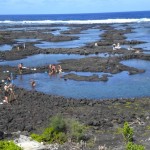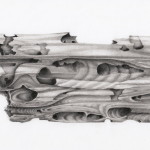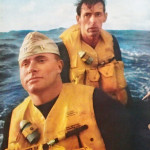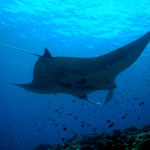Although the Deep-sea News team has just spent a whole weekend in exotic North Carolina, we are jealous of Dr. Alistair Dove who currently enroute to the majestic Abrolhos reef off the coast of Brazil. He will be representing the Georgia Aquarium in an international team of scientists traversing this tropical paradise from January 20-28.
Submersible dives are pretty much the Holy Grail for us marine scientists. I haven’t been on one (yet), so I must live vicariously through others.. The team will be blogging, tweeting, and even videocasting their hearts out whilst in Brazil. Its looking like an exciting trip–follow the team’s progress on Twitter @para_sight or using the hashtag #Abrolhos2011
Here’s Dr. Dove’s summary of the expedition goals (follow the link for more detailed info!):
The Abrolhos are completely unique reefs: they’re the largest and southernmost in the South Atlantic and biologically very different from perhaps more familiar Pacific or Caribbean Reefs. You’d think they might show some similarity to Caribbean reefs, but not so, possibly because unfavourable currents and the influence of the Amazon pouring into the ocean between the two may serve as an important barrier to animal dispersal (more on that in future posts). There’s tremendously high endemicity there, which is to say that many of the resident critters are found nowhere else in the world. Of key importance is the main reef-forming coral Mussismilia braziliensis, a massive species that forms an unusual bommie-like reef structure called a mushroom reef; we’ll meet this species in more detail later too.
The main aim of the expedition is actually to go a bit deeper than the known parts of the Abrolhos, and look at the depths where light starts to get dim: the mesophotic zone. These parts of many reef platforms are poorly known and nowhere moreso than at Abrolhos, where these areas are completely unexplored. That’s because mesophotic reefs are beyond comfortable SCUBA diving range and therefore hard to get to. To study them between 300 and 3,000ft in depth, we’ll be using the Johnson Sea Link, a submersible that operates from the R/V Seward Johnson, which is on a 5 year assignment from it’s home at Harbor Branch Oceanographic Insitute to CEPEMAR, a Brazilian environmental services company.
Share the post "Submersible at your disposal + unexplored marine habitat = EPIC expedition!!"





